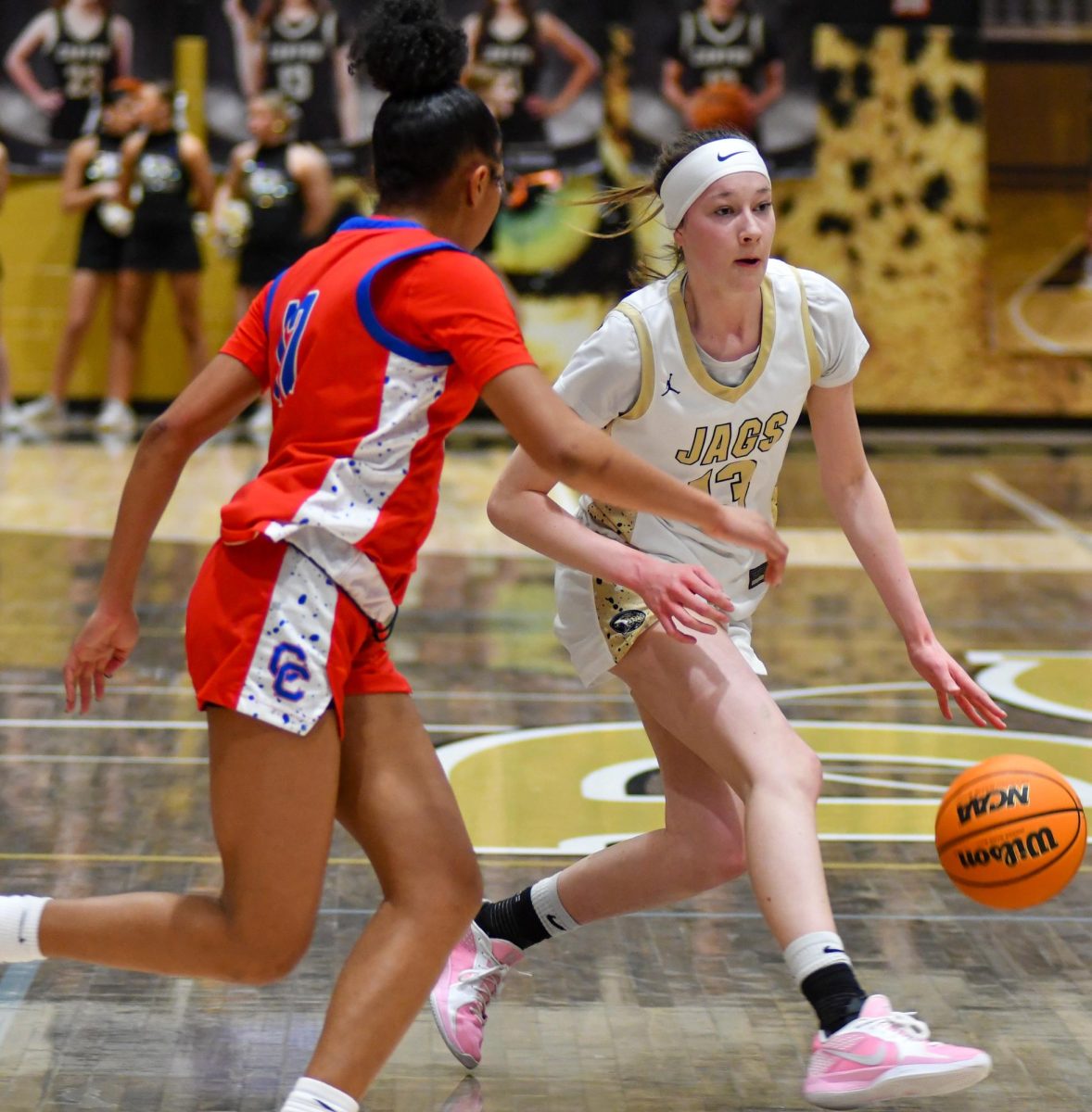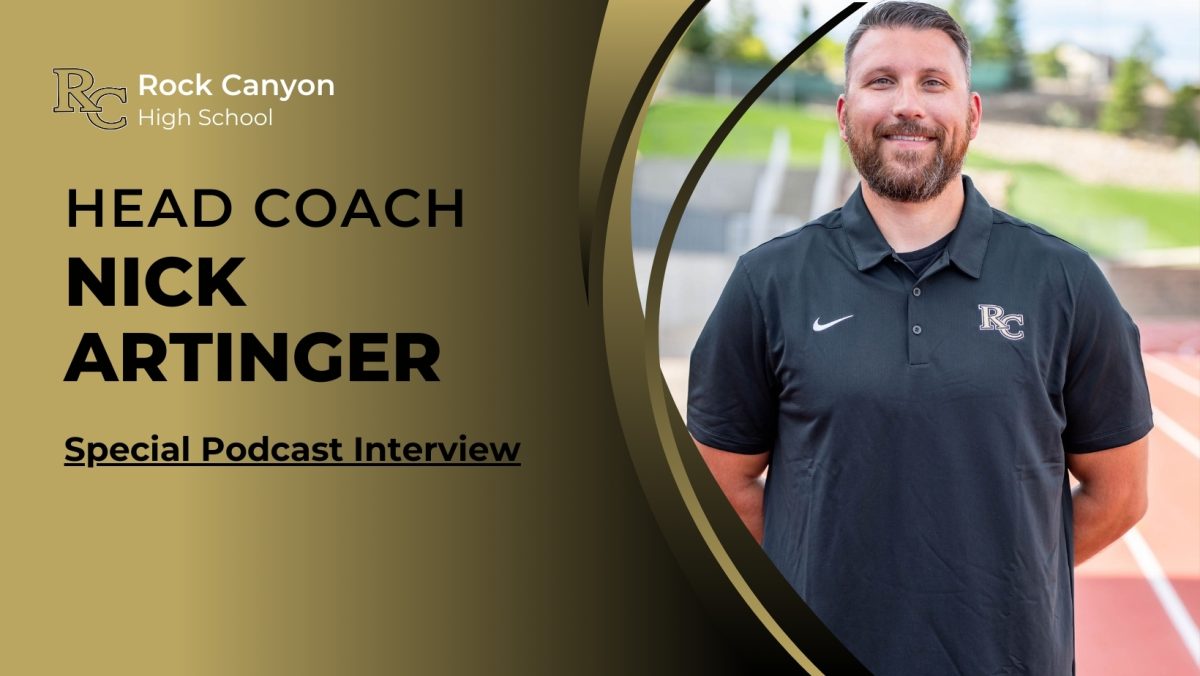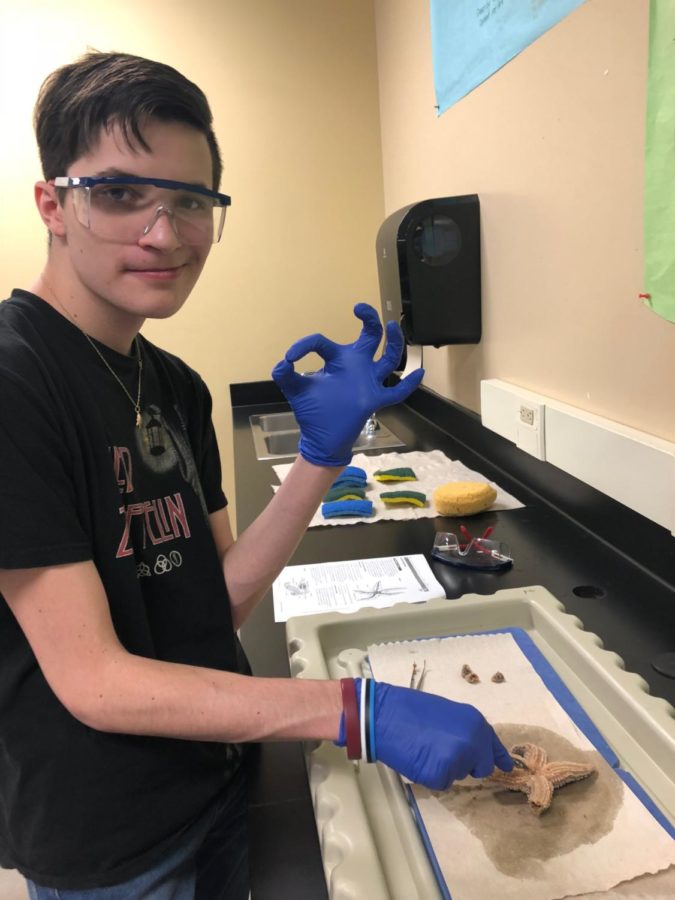Dissection Nation
Science teacher John Gallant explains the importance of dissections. Gallant’s classes dissected starfish, turtles, perch, and sharks.
December 10, 2018
In John Gallant’s fourth-period Aquatic Biology class, the students are required to dissect many animals, find different parts of them, and record it all. Gallant is a science teacher who teaches general biology and aquatic biology. He has taken a great interest in marine life and what it can do for the world, as well as the humans in it.
“I think dissections bring a unique opportunity for the students to get some hands-on-learning,” Gallant said. “Whether it’s the organ system or how different the species of animals function and grow and develop.”
Dissections in general whether it’s in biology or Aquatic Biology is a great class activity to do and get some information out of it. Some students believe that it is the most exhilarating experience.
Finnegan Twete ‘21 is just one of those many students. Recently he just dissected a freshwater turtle and found the many parts of it. “It was the most fun I had,” Twete said. “Last year as a freshman, I took regular biology and had to perform a pig dissection and I learned so much about the different parts in animals and got to compare it with humans.”
Along with Twete, Morgan Wetzel ‘21 also did the many dissections that were held in Gallant’s class. “It was pretty good,” Wetzel said. “I have the opportunity to do cut into animals and not many students might be that interested in it as I am but it is still a pretty good learning experience.”
“I think it brings, whether it’s in biology or here in aquatic biology, a unique opportunity for some hands-on learning,” Gallant said. “I think that it is fun and exciting for students, it gets them up and moving and not just reading it in a book or watching a presentation but they are taking ownership of their own learning of whatever topic that particular teacher is studying at that time.”
For students who want to pursue a career that includes animals and the science behind it, then Aquatic Biology, Biology and Zoology are great classes to take.
“I think it gives them a perspective of how the body functions work and what the role of these organs are and what an aquatic biologist does and the differences between vertebrates and invertebrates and land animals and aquatic animals and so it gives them a broader knowledge of how all functions work,” Gallant said. “So I think that that’s important for any student that they understand the why and they understand the how of things functions and relate to one another.”
“In general biology, at the end of the second semester, we spend a month learning through a pig, we learn the organ systems, respiratory systems, and reproduction systems,” Gallant said. “And in aquatic biology, we go from starfish to perch to a freshwater turtle to sharks. In zoology I know they’re doing dissections as well so there is a variety of opportunities for students here to experience that hands-on learning and the ability to and discover and to take that ownership in creativity to their own learning.”








![The winter guard team makes fifth place at the state championship finals in the Denver Coliseum, March 30. The team performed to Barnes Country's “Glitter and Gold,” lead by coaches Margo Sanford, Blair Bickerton and Anna Orgren. In their class there were a total of nine groups participating, and the top five who made it to finals received a plaque. “[Walking onto the stage] is very nerve-wracking, but also very exciting as well. When you first start color guard there's a lot of anxiety and uncertainty when you first perform in front of an audience, but once you've done it for a while, it starts to become the best part of the season,” Ella West ‘25 said. “It's very fulfilling to see an audience react to something you've put your heart and soul into.”](https://rockmediaonline.org/wp-content/uploads/2025/04/Both-socal-media-nd-website-main-1-1200x846.jpg)















![April marks the 25th anniversary of Sexual Assault Awareness Month, created by the National Sexual Violence Resource Center (NSVRC). This month is to spread awareness of the harassment, assault and abuse that happens around the world. The symbol that represented the month was a teal ribbon; however, some survivors of assault create different symbols and movements like the TikTok trend in 2022, where survivors would tattoo Medusa on their body, in honor of her backstory in Greek Mythology. “I don't think [this month is known] at all. I rarely see anybody talk about it. I rarely see much of an emphasis on posting it online, or much discussion about it, and I feel like there needs to be way more discussion,” an anonymous source said. “I think just validating every experience that a person has gone through, regardless of the degree of it, the severity, is an essential step into making sure that people are aware that this is a very real problem in a society and that we need to do better in addressing it.”](https://rockmediaonline.org/wp-content/uploads/2025/04/IMG_0011-1200x900.jpg)
![Lesbian Visibility Day is April 26, and it’s a holiday to celebrate the lesbian community of the world. Lesbian Visibility day was established in 2008 by many queer activists and organizations who sought to raise more awareness for lesbian history and culture. “So this is why during Lesbian Visibility [Day] we celebrate and center all lesbians, both cis and trans, while also showing solidarity with all LGBTQ+ women and nonbinary people,” Linda Reily, in an article written by her, said.](https://rockmediaonline.org/wp-content/uploads/2025/04/Lesbian-Visibility-day.jpeg)











